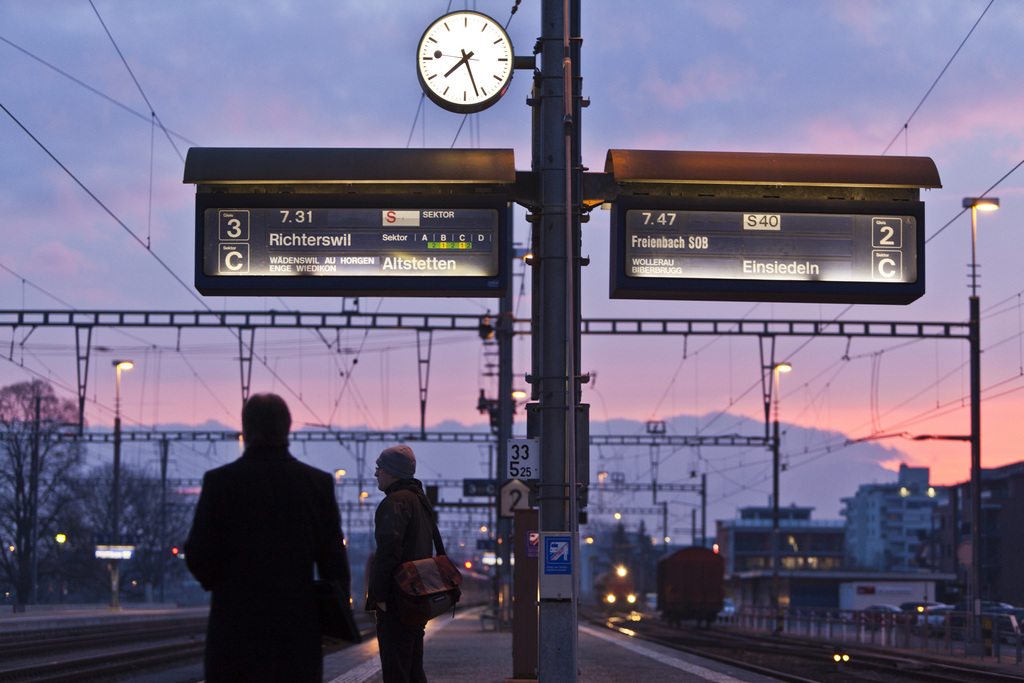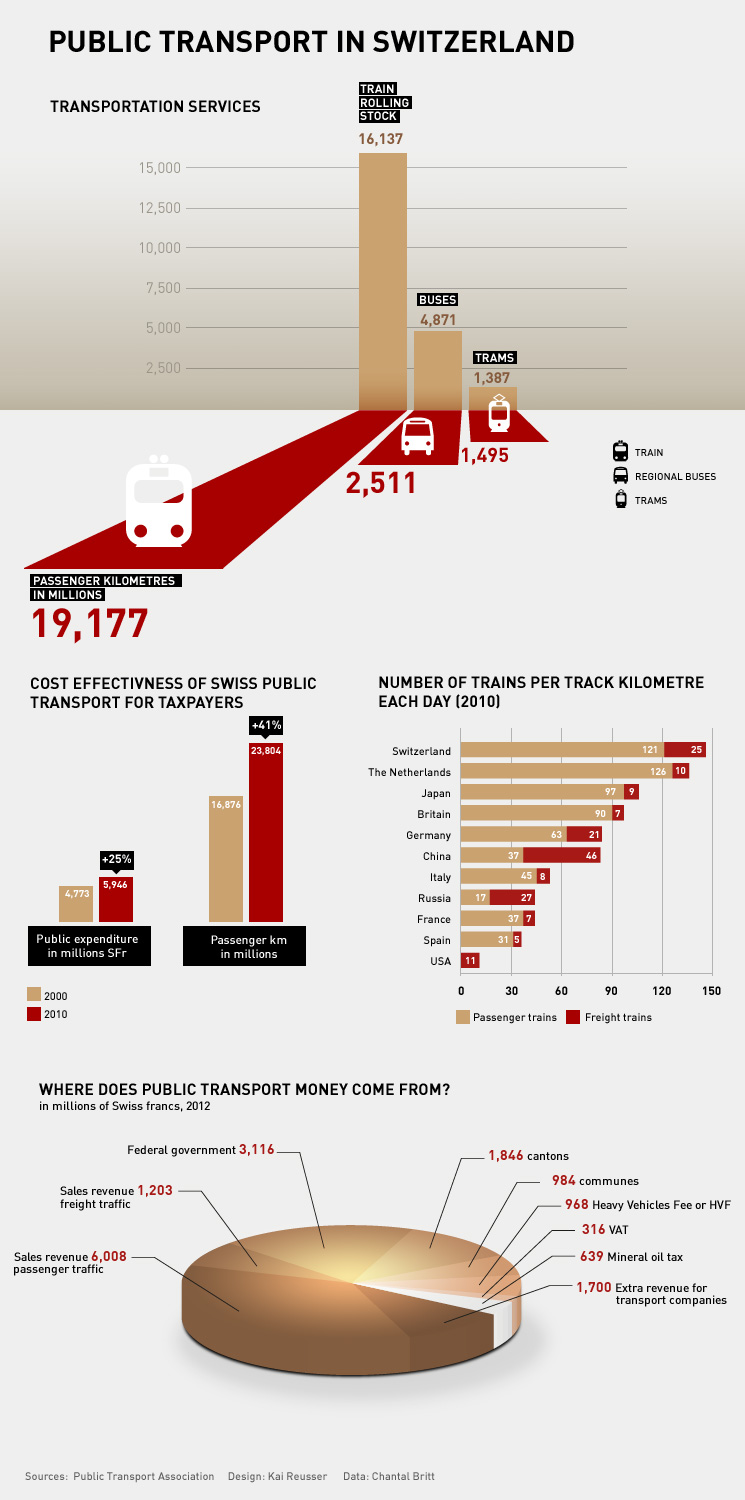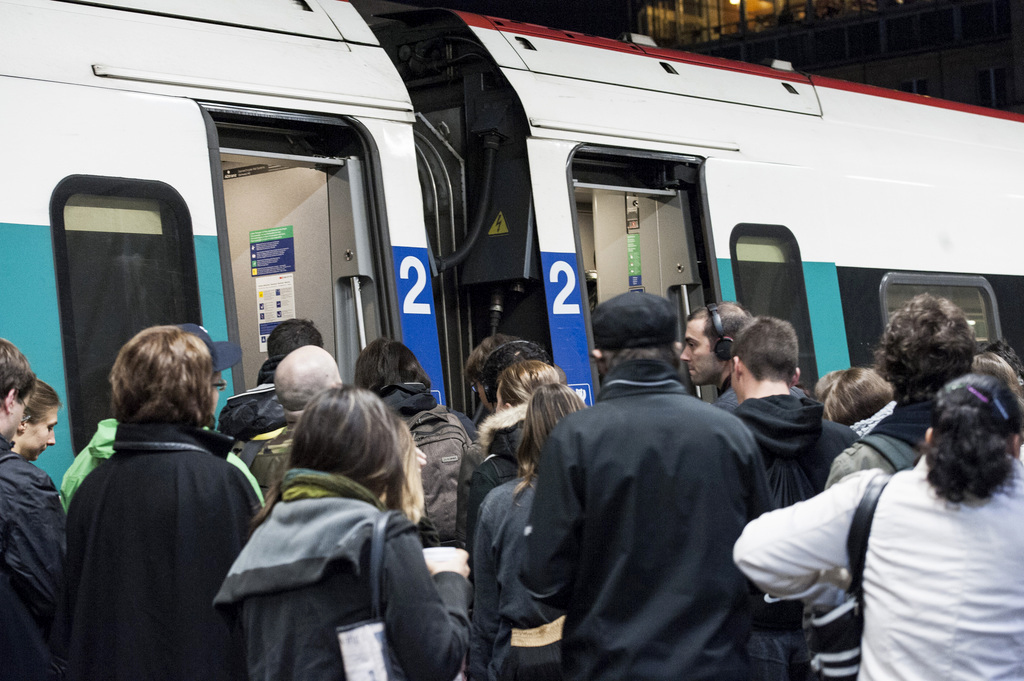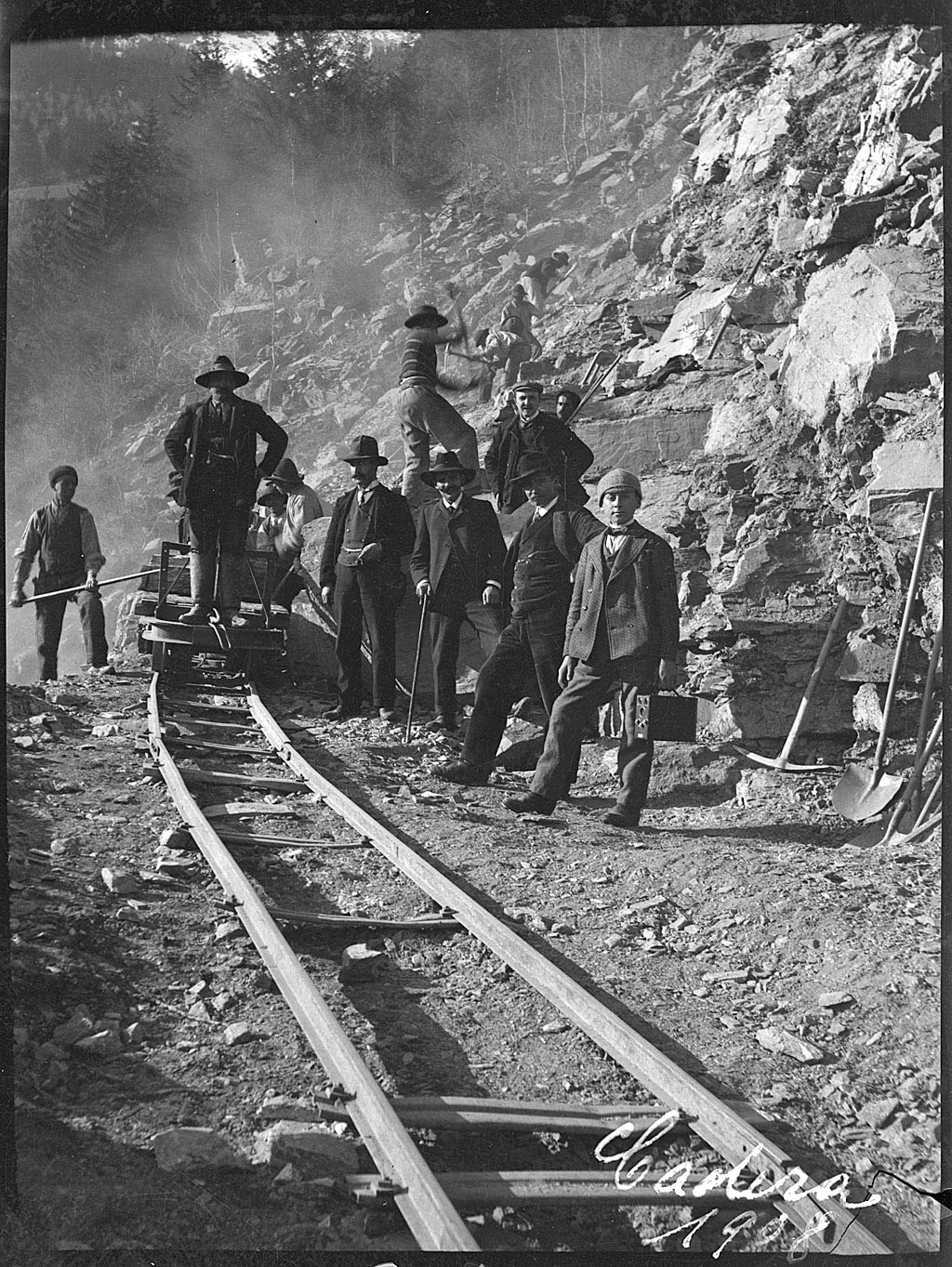The Swiss timetable is due to meticulous planning

Punctuality is considered a Swiss virtue. The fact that 90 per cent of passengers are on time is the accomplishment of train and network coordinators and their meticulous planning.
Like every year and across much of western and central Europe, new timetables kick in on the second Sunday in December. The Swiss Federal Railways and network coordinator Trasse are responsible for the timetable. Despite the dense population and the challenging topography, travellers changing trains make 98 per cent of their connections.
“In Switzerland the timetable is planned to the second,” Daniel Haltner, responsible for train path capacities at Trasse, told swissinfo.ch. “When we communicate that the train leaves exactly on the hour, we even factor in the 12 seconds the train driver may take to react to the signal turning green.”
As a consequence, passengers who watch the minute hand jump on the famous Swiss railway clock, usually feel their train move out of the station at the same time.
The timetable is the result of the best possible allocations of train paths, which are comparable to air-traffic slots. Trasse, responsible for 95 per cent of the Swiss standard-gauge network, coordinates requests, allocates paths and resolves conflicts. The result is a timetable which effectively synchronises trains with other means of transport.
“We have very high punctuality,” Markus Giger, head of rail networks at the Federal Transport Office, told swissinfo.ch. “We base our precise planning on our extensive experience and realistic assumptions, but there are still many immeasurable and unpredictable external reasons that may lead to delays.”
The operators, of course, also need a plan B. In June, a rock fall disrupted its main transit axis for almost a month, presenting the railways with a major logistical challenge. The Federal Railways had to find alternative routes for the 120 goods trains and 10,000 passengers crossing the Gotthard every day, and answer a total of 5,000 hotline calls.
Clock-face schedule
Switzerland applies clock-face scheduling, where trains between cities usually leave on the hour and half-hour. Because of the current intervals, the Federal Railways has no interest in speeding up travel times between cities, the goal is to optimise connection times, Haltner said.
The coordination of faster intercity and slower regional trains and urban traffic, which compete with rail cargo for the same train paths, is complex. This year, Trasse allocated all in all 13,512 train paths for the new 2013 timetable, to 19 operators. It had to resolve 110 conflicts, most of them involving freight, Haltner said.
Currently, scheduled passenger trains have priority over freight, but cargo companies also demand better allocations and new priorities for network access.
The intercity and commuter trains consume most of the paths, said Ulrich Weidmann, a professor for transportation systems, during an infrastructure meeting at the Swiss Federal Institute of Technology in Zurich (ETH), adding that the current network problems are primarily due to an increase in passenger traffic.
“It’s of course great that the network developed so well, but we have now reached the limits and it doesn’t leave much room for cargo,” Weidmann said. “It can’t be that a regional train has priority even if you can fit all of its passengers into a minibus.”
At the same time, passengers who travel in overcrowded trains between Zurich and Bern during rush hours, demand higher frequencies of trains.
“Offering trains every quarter of an hour would lower the capacity for freight,” Haltner said. “If the political targets for relocation from road to rail are at risk, the government would intervene and reduce passenger traffic.”
Shift to rail
Demands from cargo operators cannot be ignored seeing as the Swiss voted in favour of an initiative to protect the alps from heavy road traffic in 1994. The popular vote since then has dictated that the country shift traffic from the road onto rail tracks.
Cargo crossing the Alps by road and rail rose from 22 million tons in 1990 to 38 million tons in 2010. While the share of freight transported by rail was about 33 per cent in Austria and 17 per cent in France, it amounted to 63 per cent in Switzerland in 2010, according to the Swiss Association of Public Transport.
“Switzerland is quite far ahead with its development and its instruments compared with the EU,” Jean-Eric Paquet, director of the European Mobility Network at the European Commission, told participants at the ETH meeting. “I’m always struck by the central role those questions play in politics and the large support of the population.”
Switzerland finances the modernisation and extension of infrastructure through a unique fund and established other instruments to fund urban traffic in agglomerations. These programmes reflect the peoples’ backing for good public transport, Haltner said.
Tight-knit network
“If this system doesn’t work, the roads would be further overloaded,” Haltner explained. “Because of Switzerland’s already tight-knit network, we don’t have the option of falling back on the construction of eight-lane motorways.”
Most people live along the east-west axis, so that this is where speed is key, said Weidmann. On the north-south axis, however, speed does not really matter so much, because that is where freight trains run.
As many as three out of five freight tons cross the Alps on rail, mainly through the Gotthard and Simplon tunnels. Some of them connect the Port of Genoa on the Mediterranean Sea with Europe’s largest port in Rotterdam. Because of its central location, Switzerland has to coordinate its efforts with the EU’s transport visions for 2050.
Unlike its neighbours Switzerland is expected to be punctual with investments in the European Train Control System (ETCS) and will be EU compatible in this regard by 2017, Giger said. The Swiss also plan to invest SFr940 million for a four-metre corridor between Germany and Italy. This amount also includes pre-financing for connecting tracks on Italian territory.
“We’ll have to discuss that prefix,” said Peter Fueglistaler, director at the Federal Transport Office, at the meeting at ETH, suggesting that the government realises that it will most likely never get that money back.
At the end of the day, it all comes down to how we value traffic. “If traffic is too cheap it creates the wrong incentives,” Giger said. “On the other hand, different means of transport have to use prices to compete against each other.”
Regular-interval timetables were first developed in Germany at the beginning of the 20th century to coordinate urban traffic in large cities such as Berlin.
The regular schedules aim to increase the attractiveness of public transport because they’re easier to memorise for passengers and because the patterns make the planning of resources easier.
Such constant schedules may also improve services during off-peak hours.
The Dutch were in 1970 credited with the first junction system, which then was the basis for the Swiss regular-interval timetable in 1982.

In compliance with the JTI standards
More: SWI swissinfo.ch certified by the Journalism Trust Initiative



You can find an overview of ongoing debates with our journalists here. Please join us!
If you want to start a conversation about a topic raised in this article or want to report factual errors, email us at english@swissinfo.ch.